SYNTHETIC FOODS

arming, especially in its industrial, broadacre form, is considered by some to be the world's most environmentally damaging activity, based on the totality of its impacts. Food production represents about a quarter of the world's greenhouse emissions, and somewhere between 11-20 per cent of global emissions are from animal agriculture alone.
Today, synthetic food technologies are enabling the industrial production of foods that closely resemble proteins such as meat, milk and eggs in terms of their appearance, taste and texture. Other work involves the synthesising of fats and other ingredients. Some products are already on the market in a limited number of countries.
This field of synthetic biology is similar to genetic modification (GM), and many of these "fake" food products use GM technology in their production processes, via "precision fermentation", with GM microbes or by cell-culturing with animal cells.
Production occurs in industrial vats known as "bioreactors" to yield the desired food.
Some large players
The industry is characterised by a mixture of a few larger companies and dozens of hopeful start-ups Perhaps most well-known is Impossible Foods, a Silicon Valley manufacturer that launched in 2011.
Its products, including the famous burger, are sold in nine countries. These products are more expensive than regular meat, but the price difference has been narrowing. The key aim was to create a product that looks, cooks and tastes like real meat, with the resemblance extending to it even bleeding. Meat-like characteristics are achieved through the addition of soy leghemoglobin (heme), precision-fermented from genetically modified yeast.
Heme is one of two GM-linked ingredients in the company's products, the other being soy protein isolate. Impossible Foods is upfront about its aggressively pro-GM allegiance, with one blog post titled How GMOs Can Save Civilization and Probably
Denne historien er fra Issue 213-utgaven av WellBeing.
Start din 7-dagers gratis prøveperiode på Magzter GOLD for å få tilgang til tusenvis av utvalgte premiumhistorier og 9500+ magasiner og aviser.
Allerede abonnent ? Logg på
Denne historien er fra Issue 213-utgaven av WellBeing.
Start din 7-dagers gratis prøveperiode på Magzter GOLD for å få tilgang til tusenvis av utvalgte premiumhistorier og 9500+ magasiner og aviser.
Allerede abonnent? Logg på

WE'RE ALL in it together
Primates share food. Pandas share bamboo. Yet humans have engineered loneliness into an art form. While our screens glow with artificial connection, a quiet crisis unfolds as younger generations feel more isolated than ever before. But watch closely as communities prove that perhaps we haven't completely forgotten how to be tribal after all.
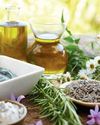
The power of accreditation in natural medicine
The support and interest in natural medicine is growing with more people turning to complementary therapies to boost their health and wellbeing.

Breaking free of comparison
Every time you catch yourself thinking, “They’re doing it better,’ your inner child remembers being told to be more like someone else. But what if this instinct to compare isn’t natural at all — rather, it’s a carefully constructed habit with roots in your earliest memories? Unpacking this inheritance might just be the key to reclaiming your sense of worth.

THE GUT SKIN CONNECTION
The science of skin health is shifting – expanding beyond the epidermis and into the microbial metropolis of the gut. Clear skin may depend less on what you see in the mirror and more on a hidden ecosystem within.
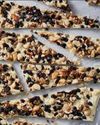
A culinary cuddle
Imagine a treat that's not just a delicacy but a delightful narrative of nourishment, wrapped in creamy white chocolate and sprinkled with nature's most charming ingredients.
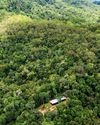
GOING OFF-GRID
Many fantasise about severing their financial dependence on big companies for everyday needs like power and water. Others make it a reality. What can we learn from them?

Untamed BALI
For many Australians, Bali has become synonymous with crowded streets and mass tourism. Yet vast swathes of the island remain wonderfully wild. The western coast, with waves for all levels and authentic village life, tells a different story of Bali.

Stop and smell the roses
What's in a name?” Shakespeare's Juliet famously pondered. For MV Skintherapy, it's everything, which is why they've deliberately used the term “skin therapy”, instead of “skincare”.
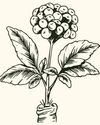
Siberian ginseng (Eleutherococcus senticosus)
(Eleutherococcus senticosus)
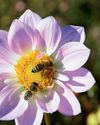
Green Beat
A new study published in Science highlights the alarming risks pesticides pose to ground-nesting bees, vital for pollination and food production.
